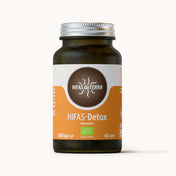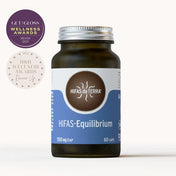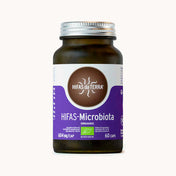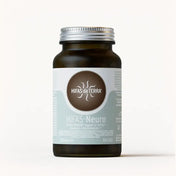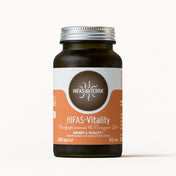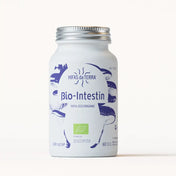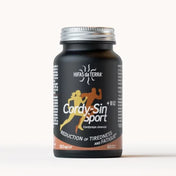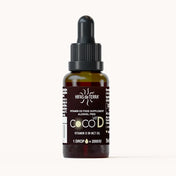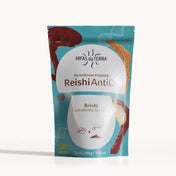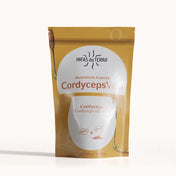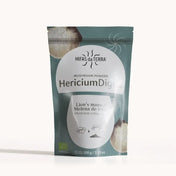In recent years, there has been a notable increase in the prevalence of polymedicated individuals, a demographic characterized by either chronic medical conditions or being aged over 65 years.
Polypharmacy, or the simultaneous use of multiple medications, is an increasingly common reality in modern medical care.
As science advances and treatment options multiply, patients find themselves in a maze of treatments that can often be complicated to navigate.
In the following post, we explain the details of polypharmacy, but we also talk about holistic nutrition, in which the simultaneous intake of food supplements can also occur, and review which formats can be helpful in this type of situation.
Polypharmacy: overuse or NECESSARY use of medicines?
First of all, what is polypharmacy? According to health authorities, polypharmacy is defined as "the administration of many medicines simultaneously or the administration of an excessive number of medicines". The minimum number of medications used to define polypharmacy varies, but studies generally place it between 5 and 10 medication intakes per day.
The excessive and inappropriate use of medicines is recognised as a public health problem. And rightly so, polypharmacy leads to a whole host of potentially serious problems:
- adverse reactions
- drug interactions and inappropriate prescribing of medicines
- increased healthcare costs.

Polypharmacy and food supplements: HOW ARE THEY RELATED?
Although the risks associated with polymedicated patients are most often related to medicines, they are not exclusive to them. Albeit they are two different products, taking medicines and dietary supplements can lead to the problems inherent in polypharmacy.
The polymedicated patient and drug-drug interactions
As with the use of medicines, dietary supplements can be associated with adverse effects and drug-drug interactions.
In other words, supplements may present a risk when taken with medicines. This risk is even greater in certain groups. For example, among older people, whose physiological functions may be impaired, taking food supplements can lead to health problems, especially with concomitant medication.
On the other hand, there are also recent reports in literature pointing to cases of excessive or inappropriate use of dietary supplements.

Examples of risks associated with nutritional polypharmacy
As we have seen, the use of medicines and food supplements is associated with an increased risk of adverse drug events. Here are some examples of known potential interactions:
- Nonsteroidal anti-inflammatory drugs (NSAIDs) and Gingko biloba: Taking NSAIDs, such as ibuprofen, at the same time as gingko biloba-based supplements may increase the risk of gastrointestinal bleeding due to the anti-platelet aggregation properties of certain compounds in gingko biloba.
- Levothyroxine (thyroid hormone) and soy: Some soy-based dietary supplements, particularly isoflavones, can interfere with the absorption of levothyroxine, a drug used to treat thyroid disorders.
- Methotrexate (anticancer drug) and grapefruit: grapefruit and grapefruit juice contain compounds that inhibit the activity of an enzyme involved in the metabolism of methotrexate.
- Statin and red yeast rice: Red yeast rice naturally contains lovastatin, a natural statin. A person taking a statin prescribed by a doctor and red yeast rice doubles the treatment.
How to limit the risks of nutritional polypharmacy?
More specifically, to limit the risks associated with polymedicated patients who also take supplements, several factors should be carefully considered to ensure the safe and effective use of dietary supplements:
- Consult your healthcare professional, who will be able to offer you personalised advice.
- Buy from reputable companies that provide drug interaction information.
- Respect the recommended doses to avoid unwanted interactions.
- It uses standardised products from reputable laboratories to improve the reliability and consistency of dosing.
- Find out about possible interactions between food supplements and medicines, contraindications and side effects.

Liquid formulas: an alternative to nutritional polypharmacy?
Exploring the use of orally administered liquid formulations offers an interesting perspective to prevent the risks associated with nutritional polypharmacy and the polymedicated patient through several different mechanisms.
- First, liquid formulations tend to have faster absorption rates compared to solid forms, reflecting a quicker onset of action. This feature may be advantageous for more precise administration, helping to minimise potential interactions.
- In addition, the liquid form offers greater flexibility in dosage adjustment, which facilitates the creation of personalised intakes. The dose adaptability of liquid formulations to an individual's specific needs is easier. As an example, our range of liquid mushroom extracts sets doses based on an individual's weight.
- Finally, liquid formulations may have better bioavailability, ensuring that a higher percentage of the administered dose reaches the bloodstream than some solid forms.
In the laboratory of Hyphae da Terra we have a very innovative food supplement that helps the immune system*.
Hifas-Lentinan is formulated from lentinan, the fungal beta-glucan from Shiitake (Lentinula edodes), the most studied in scientific literature.
- It contains natural and bioactive substances recognised for their action on the immune system.
- Taken orally for better bioavailability of the active ingredients.
* Hifas-Lentinan contains fungal immunomodulatory components and vitamin C, which contribute to the normal functioning of the immune system.
 DISCOVER MORE
DISCOVER MORE
Hifas da Terra : A COMPANY COMMITTED TO PRODUCT SAFETY
As a biotech specialising in pure fungi, we have had the interaction risk of our fungal extracts assessed by an independent body (Medina Foundation). This study aimed to investigate the interactions of our fungal extracts with hepatic cytochromes P450 (crucial in the metabolization of most drugs). The results indicate that our extracts present only a low risk of drug interaction due to their low inhibition of CYP450.
